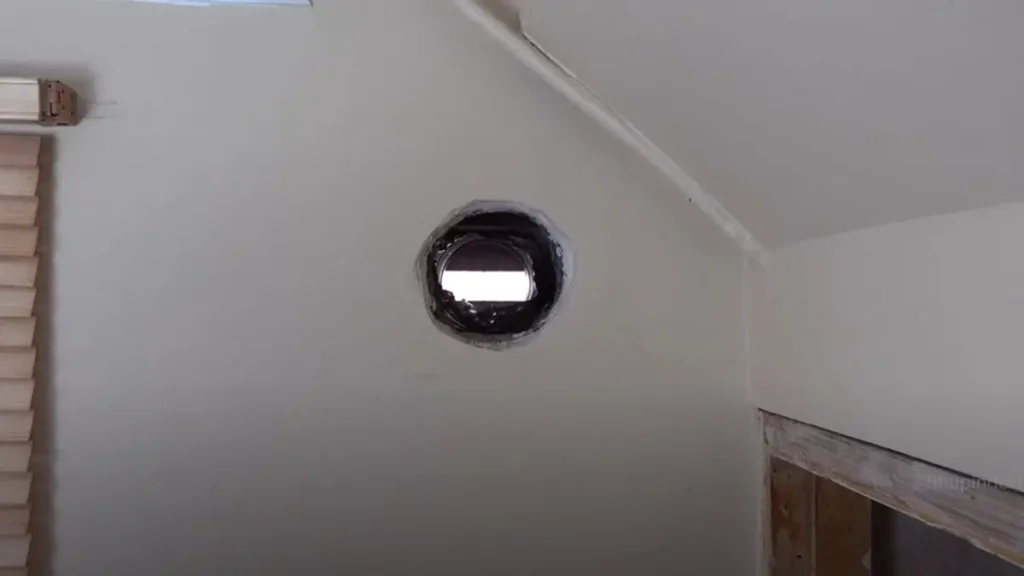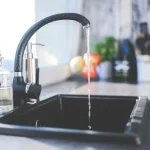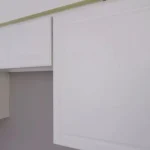To close a kitchen exhaust fan hole, use a cover or patch material that fits securely. Seal any gaps for proper ventilation.
Ensuring your kitchen exhaust fan hole is properly closed is essential for maintaining a safe and efficient kitchen environment. Whether you are renovating your kitchen or have recently removed the exhaust fan, sealing the hole correctly is crucial. We will discuss the steps and materials needed to effectively close a kitchen exhaust fan hole.
By following these guidelines, you can prevent air leaks, improve energy efficiency, and maintain a clean and functional kitchen space. Let’s dive into the details of how to tackle this task effectively.
Assessment
When tackling the task of closing a kitchen exhaust fan hole, the first step is to conduct a thorough assessment to determine the scope of the project.
Identifying The Exhaust Fan Hole
- Locate the exhaust fan hole in your kitchen.
- Measure the dimensions of the hole accurately.
Checking For Damage
- Inspect the surrounding area for any signs of damage.
- Ensure the hole is structurally sound before proceeding.
Preparation

To close a kitchen exhaust fan hole, start by gathering the necessary materials such as a piece of plywood, a jigsaw, and silicone caulking. Measure the hole carefully and cut the plywood to fit securely, then seal the edges with silicone caulking to prevent air leaks.
Gathering Necessary Materials
- Step 1: Collect a screwdriver, putty knife, and sealant.
- Step 2: Ensure you have a ladder for easy access to the exhaust fan hole.
- Step 3: Prepare a rag or cloth to clean the area after closing the hole.
Safety Precautions
- Step 1: Wear safety goggles to protect your eyes from debris.
- Step 2: Ensure the kitchen exhaust fan is turned off before starting.
- Step 3: Be cautious while working on a ladder to prevent falls.
Closing Methods
When closing a kitchen exhaust fan hole, there are several methods you can use to ensure a secure and effective seal. Below are the most common methods for closing a kitchen exhaust fan hole.
Using Patching Materials
Patching materials such as drywall, plywood, or metal sheet can be used to cover the exhaust fan hole. These materials should be cut to size and securely attached over the hole using screws or nails. It’s important to ensure a snug fit to prevent air leakage.
Sealing With Caulk Or Sealant
Caulk or sealant is another effective method for closing a kitchen exhaust fan hole. Apply a generous amount of caulk or sealant around the edges of the hole to create a tight seal. This will help prevent air and moisture from entering or escaping through the hole.
Step-by-step Guide
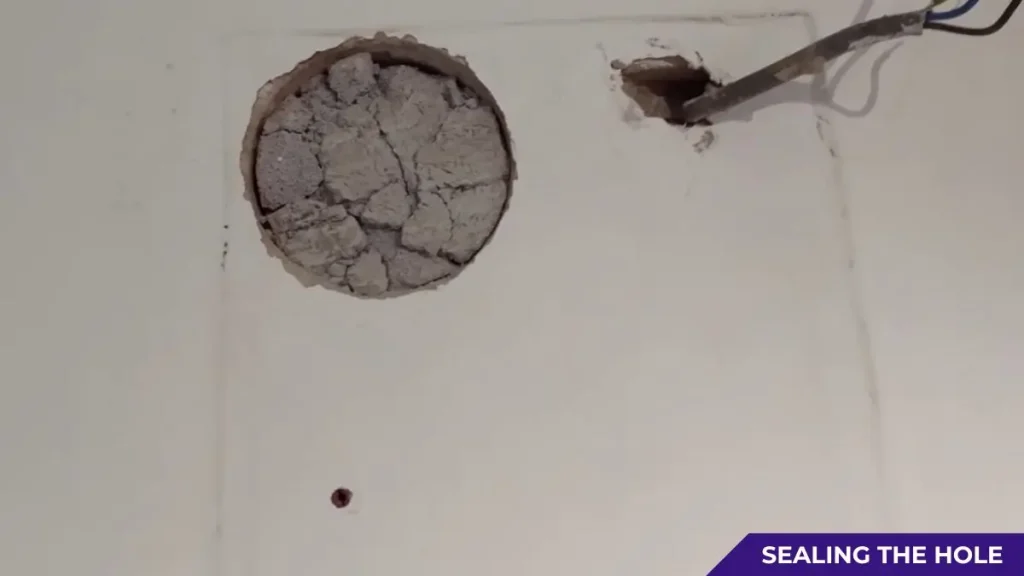
In this step-by-step guide, we will walk you through the process of closing a kitchen exhaust fan hole. Whether you are remodeling your kitchen or simply need to seal the opening left by an old exhaust fan, this guide will provide you with the necessary steps to complete the task effectively.
Cleaning The Area
Before you begin the process of closing the kitchen exhaust fan hole, it is essential to ensure that the area is clean and free from any debris or dust. Use a damp cloth to wipe down the surrounding surface and remove any dirt or grease that may have accumulated over time. This will ensure a smooth and even application of the patching material.
Applying Patching Material
Once the area is clean, you can proceed with applying the patching material. Prepare the patching material according to the manufacturer’s instructions, and carefully fill the hole with the compound. Use a putty knife to spread the material evenly, ensuring that it fills the hole completely and creates a seamless surface. Allow the patching material to dry according to the recommended time frame before proceeding to the next step.
Sealing The Hole
After the patching material has dried, it is time to seal the hole to ensure a durable and long-lasting solution. Apply a layer of sealant around the edges of the patched area to create a watertight seal. Be sure to choose a sealant that is suitable for kitchen environments and can withstand heat and moisture. Once the sealant has been applied, allow it to dry completely before testing the area for any signs of leakage or damage.
Testing And Inspection
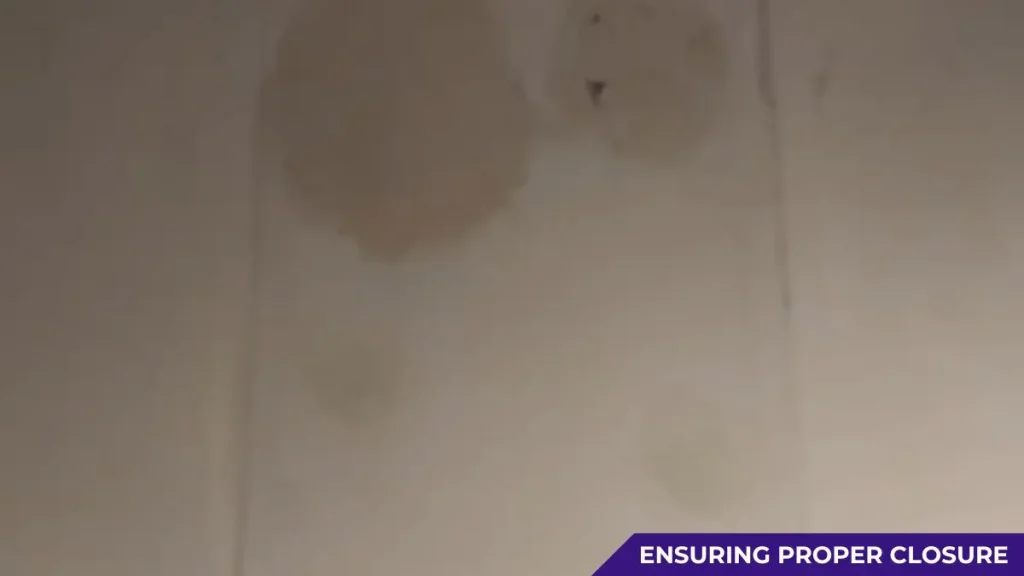
Testing and inspection are crucial steps in the process of closing a kitchen exhaust fan hole. It is important to ensure that the closure is properly sealed to prevent any leaks and to maintain the efficiency of the kitchen exhaust system. This section will guide you through the essential steps of testing and inspection to guarantee the effectiveness of the closure.
Checking For Leaks
One of the primary objectives of testing and inspection is to check for any potential leaks in the closed kitchen exhaust fan hole. Use a smoke pencil or a smoke generator to visually inspect the area around the closure for any signs of smoke seepage. Run the exhaust fan and carefully observe the smoke movement. If there are any leaks, the smoke will flow outwards, indicating a need for resealing or reinforcement of the closure.
Ensuring Proper Closure
After conducting the initial inspection for leaks, it is essential to ensure that the closure is firmly sealed. Visually inspect the edges and seams of the closure for any gaps or irregularities. Use a flashlight to illuminate the area and look for any signs of light passing through. Apply pressure around the closure to check for any potential movement or weak spots. A properly sealed closure should exhibit no signs of gaps, light leakage, or movement when subjected to pressure.
Read Also: How to Insulate Around Bathroom Exhaust Fan
Maintenance Tips
When it comes to keeping your kitchen exhaust fan in top condition, regular maintenance is key. By performing simple maintenance tasks, you can ensure that your exhaust fan works efficiently and effectively. Here are some maintenance tips to help you keep your kitchen exhaust fan in tip-top shape.
Regular Inspection
Regular inspection of your kitchen exhaust fan is essential to identify any potential issues early on. Inspect the fan blades, motor, and vent cover to ensure they are free from dust and debris that can impede airflow. Additionally, check for any signs of wear and tear, such as loose or damaged components. Performing regular inspections will help you catch any problems before they escalate, saving you time and money in the long run.
Cleaning The Exhaust Fan
Regular cleaning of the exhaust fan is crucial to maintain its efficiency and prevent the buildup of grease and grime. Remove the vent cover and wipe down the blades and motor with a damp cloth to remove any accumulated dirt and grease. Use a mild detergent or degreaser to effectively clean the fan components, ensuring that they are free from any residue that can hinder performance. Regular cleaning will help prolong the life of your exhaust fan and maintain optimal airflow.
Common Mistakes To Avoid
When closing a kitchen exhaust fan hole, it’s essential to be mindful of common mistakes that can compromise the effectiveness of the closure. By avoiding these errors, you can ensure a proper and long-lasting solution for sealing the exhaust fan hole in your kitchen.
Using Incorrect Materials
One common mistake to avoid when closing a kitchen exhaust fan hole is using incorrect materials. It’s crucial to select materials that are resistant to heat and moisture to prevent deterioration over time. Avoid using flimsy or non-durable materials that can lead to air leaks and potential damage to the surrounding area.
Neglecting Proper Sealing
Another mistake to steer clear of is neglecting proper sealing. Failing to ensure a tight seal around the exhaust fan hole can result in air leaks and inefficient ventilation. It’s important to use high-quality sealants and adhesives to create a secure and airtight closure that prevents air from escaping.
Conclusion
Closing a kitchen exhaust fan hole requires careful planning and execution. It is important to choose the right materials and tools, and to follow the proper steps to ensure a successful outcome. By sealing the hole properly, you can improve the efficiency of your kitchen exhaust system, reduce energy costs, and prevent unwanted pests and debris from entering your home.
With the tips and techniques outlined in this guide, you can confidently tackle this project and enjoy the benefits of a well-maintained kitchen exhaust system.

